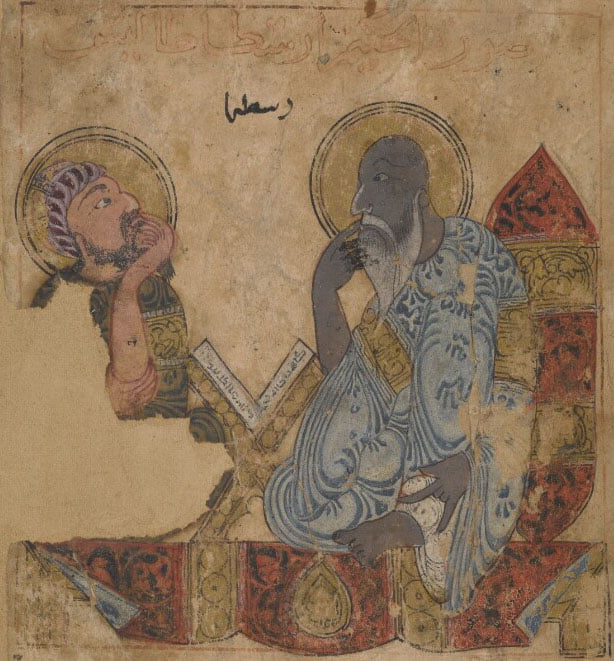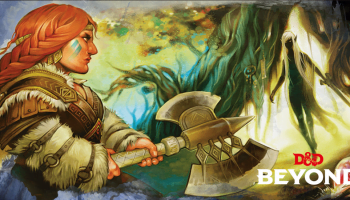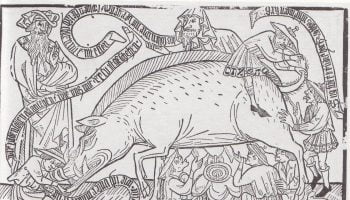Part XXXX in our ongoing series on Race, Racism and the Middle Ages, by Paul B. Sturtevant. You can find the rest of the special series here.
“The way to right wrongs is to turn the light of truth upon them.” —Ida B. Wells-Barnett
The Public Medievalist launched our series on Race, Racism, and the Middle Ages in February, as a celebration of Black History Month. It was originally intended to have six installments.
This is number forty.
In that first month, it quickly became clear just how much there is to say on the topic of Race, Racism and the Middle Ages—and how much medievalists are interested in doing so. It is a complex set of interconnected issues that raise difficult questions about our past, our present, and our future.
So, we expanded the scope of the series, and asked for contributions. And medievalists answered the call! Ultimately, we have featured contributions from twenty-one different scholars working in four different countries. These scholars range from leading professors in this field to up-and-coming PhD students, and includes work by those within the traditional boundaries of academia and those, like myself, outside them. And ultimately, this series has been read over 300,000 times, and used by teachers in at least 60 classrooms.
This series became far more than we could have ever expected.
In light of all of this I personally felt it would be a good moment to pause and reflect on the series and where we go from here.
We Hold These Truths to Be Self-Evident
When launching this series, we hoped that maybe, just maybe, the articles might help to convince a white-nationalist or two of the error of their ways. I personally no longer think that’s entirely realistic (though if I’m wrong on that, feel free to say so in the comments below). But what all of us here at The Public Medievalist do hope is that we have helped. We hope that we have provided firm evidence that can counter the hate and misinformation that white supremacists spread. We hope that we have armed more people with the tools to counter white-nationalist narratives. We hope that we have shown how these narratives have wormed their way into our culture. And we hope that we have taken at least one small step in shifting the popular perceptions of the Middle Ages for the better.
To do that, we have provided repeated evidence of a handful of simple truths about the Middle Ages—truths that are important enough for everyone to burn into their retinas.
- The Middle Ages did not just happen in Europe.
- Our current ideas about “race” are not based in science.
- Ideas about “race” have changed vastly over time.
- Medieval people did not think about race the same way that we do.
- Of course, many medieval European Christians were prejudiced. Violence and injustice happened then, as it does now. But we can also find those who did the right thing and stood up to that violence and hate, even in the darkest moments. Just like now.
- Medieval Europe was not all white.
- Medieval Italy, Spain, and Byzantium were melting-pot cultures—and all the better for it.
- People of color lived in medieval Europe, and more and more migrated to Europe as the centuries went on.
- The Middle Ages should not be defined by its conflict between peoples. There were long periods of peace, tolerance, and cooperation.
- That being said, conflicts did happen.
- For example, it was during the Middle Ages that many of the anti-Jewish stereotypes and prejudices that still plague us came into being.
- But the medieval world was at its best during the periods of peace and cooperation. Just like now.
- It’s a question of what history you want to celebrate, to learn from, and to emulate.
We at The Public Medievalist aim to make the latest-and-greatest research in medieval studies accessible to everyone. But none of these particular core truths are new. None are especially controversial among most scholars; medievalists have known them for decades. But they are still not very well known outside of academia.
This is partly because this expansive view of the Middle Ages is not always taught—whether at the elementary, pre-collegiate, or collegiate level. It is also partly because the version of the Middle Ages that is most often presented in popular culture typically falls afoul of one or many of these truths.
And this is because of the legacies of racism. It’s easy to see those legacies in the torch-wielding mob in Charlottesville, or the self-described “alt-right” trolls. But many of the first great enthusiasts of the Middle Ages studied it with a mindset of proving the greatness of their nation or their race. Many of the first great medievalists conducted their foundational research in that vein as well. That history has echoes that can be heard today.
So, it is unsurprising that the incorrect ideologies of western European superiority, or even white superiority, are entwined in the public perception of the medieval past. It will take time, and work, to dislodge them fully.
The Public Medievalist is glad to be part of that effort.
So What Happens Now?

This series is not over. In the coming months, we will be focusing on our new series Gender, Sexism and the Middle Ages (which, as you might expect, has a multitude of intersections with the subject of race). But we will publish new articles on the topic of Race, Racism and the Middle Ages as we receive them—so if you have an article you’d like to pitch, please do so.
There is still much more to be explored on the topic of Race, Racism and the Middle Ages. We did not have any contributions that addressed Byzantine history, or Constantinople as one of the great cultural melting-pot cities of the world. Speaking personally, I would love to see more articles on the medieval Muslim world (and I anticipate several will come in our new series). I crave more profiles of extraordinary medieval people who lived outside of Europe. Ibn Rushd. Al-Zahrawi. Maimonides. Mansa Musa Keita I. Al-Biruni. Arwa al-Sulayhi. The list goes on.
I need to see an article on the Cairo Geniza. Give me more articles on sub-Saharan Africa during the Middle Ages, and of the mounting archaeological evidence for contact between medieval Europe and the Islamic, Buddhist, and Mongol power centers. I would be absolutely thrilled to know more about the medieval skeletons of people from Africa that are being found in various corners of Europe (though in the meantime, I’ll content myself with reading everything Caitlin Green has ever written).
And, as has happened many times this year, I would love for an author to write an article on something I previously knew nothing at all about.
So in short, we here at TPM will continue to welcome articles on Race, Racism, and the Middle Ages, even if it is no longer our primary focus. We will keep publishing if you keep reading.
Thanks
I never expected this series to become what it has. Thank you to everyone who has read, shared, commented, and written. This site’s audience has grown by orders of magnitude since this series began, and it is all thanks to you sharing it with your friends, family, colleagues, and social media networks. Thank you.
Special thanks as well to those who have assigned us to their students. I know that teachers at over 60 universities have assigned The Public Medievalist articles for their courses—everywhere from the Universities of Oxford and Cambridge to small community colleges. And I know from our reader survey data and from personal anecdotes that our work is being used in high school and middle school classrooms as well. Thank you for sharing this series with your students. We hope they found it interesting, enlightening, and/or inspiring.
Thanks additionally go to our Deputy Editor, the no-longer-incognito Amy Kaufman (previously aka Dr. Dark Age), and to our newest editors Rob Houghton and Victoria Cooper, and editorial consultant Arielle Gingold. And double thanks to all of the contributors to the series, without whom it would not have become what it now is. I encourage you to check out all of their writing, both here and elsewhere on the internet.
I’ll see you in the New Year. Onward!
If you enjoyed that article, please share it with your history-loving friends on Facebook, or on Twitter! And be sure to subscribe here to receive every new article from The Public Medievalist the moment it launches.





Really enjoyed this series. Well done to all that contributed. Looking forward to the next one on gender, needed now more than ever.